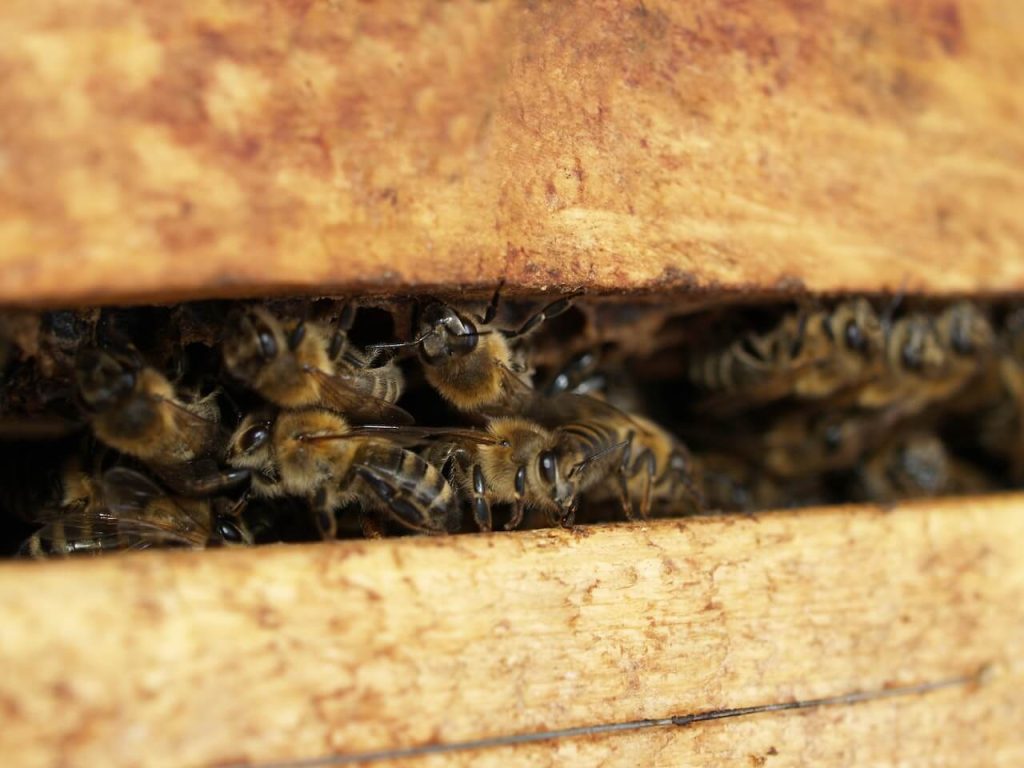There’s a lot to buzz about in the fall here in the Pacific Northwest – back to school, fall foliage, and football season to name a few. But there’s one type of buzz that does not make us excited – stinging insect activity. You may notice a bit more aggression from bees, hornets, and wasps these days. This change in behavior happens because of the season shift and the life cycle of these insects and their nests. Let’s explore why stinging insects get more aggressive in the fall and learn some tips to avoid them.
We’ve already talked about the types of stinging insects found in the Pacific Northwest. Stinging insects play an important role in nature as pollinators and predators of pest insects, but they can be dangerous. PestWorld reports that they result in over 500,000 annual emergency room visits, with individuals allergic to stings being the most vulnerable.
Understanding Stinging Insect Behavior in the Fall
There are a couple of reasons why bees, wasps (such as yellowjackets), and hornets become aggressive in late summer and early fall:
- Their populations are at their max after growing all summer, so there are simply more of them buzzing around.
- They are working hard to protect the queen for the winter which makes them very protective of their hives.
- Food availability is on the decline and stinging insects are hungry. As the season changes the amount of traditional food (e.g., flowers and insects) is on the decline, and there is not enough food to go around. This forces them to search for alternative food options (e.g., your food and drinks).
How to Avoid Being Stung
If you notice a bee or a yellowjacket flying around you, your natural instinct is to swat at it. Try not to! Swinging at the insect may cause it to sting. The Centers for Disease Control and Prevention (CDC) also recommends the following tips:
- Wear light, smooth clothes.
- Skip scented products like perfumed soaps, shampoos, and deodorants.
- Stay away from flowering plants if you can.
- If a bee or wasp gets inside your car, stop slowly and open all the windows.
You should also avoid walking barefoot in your yard to prevent disturbing nesting insects or accidentally stepping on a foraging individual. When mowing your lawn, keep an eye out for bee and wasp activity.
What to do if you get stung by a bee
According to the American Academy of Allergy, Asthma & Immunology (AAAAI), if an insect stings you and leaves its stinger in your skin, remove it within 30 seconds if possible to prevent more venom from entering. Use your fingernail to gently scrape off the stinger and its sac. Avoid squeezing the sac because it can push more venom into your skin. If you’re stung by any stinging insect, try to stay calm, brush the insect off your skin, and quickly leave the area.
Here are some steps to manage local reactions to insect stings:
- Elevate the affected area and apply a cold compress to reduce swelling and pain.
- Gently clean the area with soap and water to prevent infections; don’t pop blisters.
- Use topical steroid ointments or oral antihistamines to relieve itching.
- If swelling worsens or the sting site looks infected, see a doctor.
For people with severe insect allergies, carry an auto-injectable epinephrine device. Learn how and when to use it, and replace it before it expires. If you’re having a serious reaction to a bee sting that suggests anaphylaxis call 911.

Is it safe to remove a bee’s nest yourself?
Honey bees, and most bees, will not sting without a very good reason. The exception is if there’s any immediate danger to their nest. Keep that in mind when deciding whether or not you should try and remove a bee’s nest yourself. In general, bees are good for their environment, so if no one in your family is allergic to bees, you don’t have small children or the nest is far enough away from your home, the nest may be worth saving. If you spot a nest on your property, give a pest control company like Interstate Pest Management a call. We can identify the type of nest and advise you on the next steps.
Is it safe to remove a yellow jacket nest yourself?
Yellow jackets are a type of wasp. They, along with paper wasps, are some of the most common types of wasps encountered in Southwest Washington and Northwest Oregon. They live in nests constructed of paper cartons, which can grow to be basketball-sized. Attempting to remove a yellow jacket nest on your own is not recommended. Yellow jackets can become aggressive when their nest is disturbed. If you need to eliminate a yellow jacket nest, it’s best to hire professionals for the task.
Expert Pest Control for Bees, Wasps, Hornets in Portland, Vancouver, Olympia, and Kelso
Stinging insects keep pest control professionals busy this time of year. A local professional pest control company like Interstate Pest Management will help you with safe bee and wasp control and removal. This includes:
- Bee and wasp identification
- Bee, wasp, and hornet nest removal
- Identifying when you have a bee issue
- Preventive services to keep bees, wasps, and hornets from coming back
We are headquartered in Kelso, WA, and have offices in Portland, Vancouver, and Olympia. We offer eco-friendly hornet and wasp control. This means we are capable of removing any nest, no matter the location. We also don’t kill honey bees; we will refer to a beekeeper to come and take them. If you’re interested in learning more, get in touch with us here or call us at (503)-832-4997.